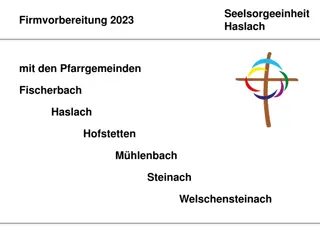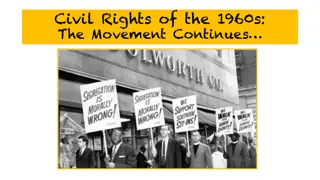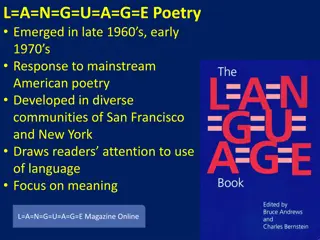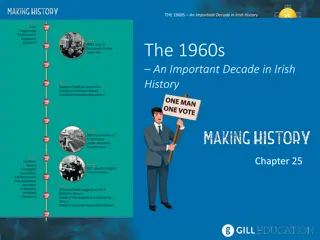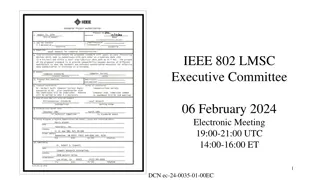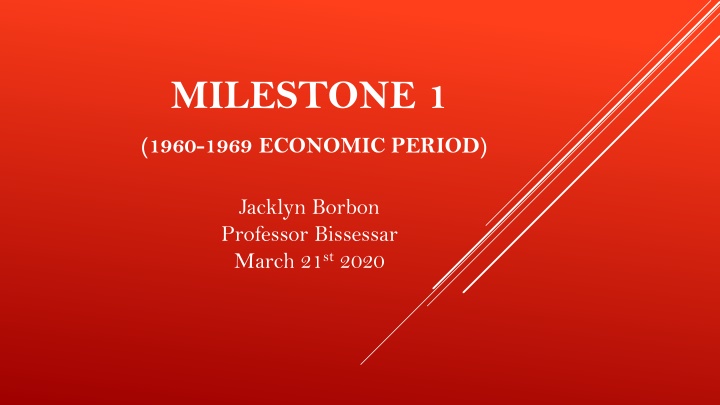
Economic Growth and Trends in the US during the 1960s
Explore the economic history of the United States during the 1960s, including significant growth in sectors like housing and computers, impactful policies by President Johnson, inflation and unemployment rates, interest rate fluctuations, and references for further reading.
Download Presentation

Please find below an Image/Link to download the presentation.
The content on the website is provided AS IS for your information and personal use only. It may not be sold, licensed, or shared on other websites without obtaining consent from the author. If you encounter any issues during the download, it is possible that the publisher has removed the file from their server.
You are allowed to download the files provided on this website for personal or commercial use, subject to the condition that they are used lawfully. All files are the property of their respective owners.
The content on the website is provided AS IS for your information and personal use only. It may not be sold, licensed, or shared on other websites without obtaining consent from the author.
E N D
Presentation Transcript
MILESTONE 1 (1960-1969 ECONOMIC PERIOD) Jacklyn Borbon Professor Bissessar March 21st 2020
US ECONOMIC HISTORY (1960-1969) In the 1960s, the US encountered a lengthy continuous economic growth period in history. During that decade, housing as well as computer sector beat chemicals, automobiles, and electrically-powered commodities, which led during the 1950s. Large businesses run the domestic economy within that period. In 1962, the 5 largest industrial companies constituted to over 12% of all manufacturing assets. President Johnson had taken over a robust economy from president Kennedy. During his term, the growth from 1964-1965 produced annual dividends of 4 to 5 billion dollars in additional revenues for spending. As the decade ended, the average income for Americans has rose by 50% . Median family earnings increased from $8,540 to $10,770 between 1963-1969.
INFLATION/UNEMPLOYMENT RATE By the mid-1960s, inflation remained less than 2 percent, whereas unemployment started at about 7 percent and reduced to 3.7 percent in 1966. The misery index was at the lowest in November, 1965, at 5.7 percent and unemployment and inflation at 4.1 percent and 1.6 percent respectively. Johnson launched his Great Society program which started increasing social programs and by 1969, misery index was almost at double at a little below 10 percent (December 1960: inflation = 6.2 percent, unemployment = 3.5 percent) (Manuel, 2015). The mean inflation in that decade was an average 2.32 percent.
Interest Rate Fluctuations Rates of Saving Interest August 1960 December 1965 March 1966 June 1966 August 1966 January 1967 March 1967 November 1967 April 1968 September 1968 December 1968 December 1968 January 1969 March 1969 June 1969 4.5 5 5.5 5.75 6 5.75 5.5 6 6.5 6.25 6.5 6.75 7 7.5 8.5
REFERENCES Manuel, D. (2015) Historical Unemployment Rates in the United States retrieved from http://www.tradingeconomics.com/united- states/gdp Walsh, K. (2010) The 1960s: A Decade of Promise and Heartbreak retrieved from http://www.usnews.com/news/articles/2010/03/09/th e-1960s-a-decade-of-promise-and-heartbreak





